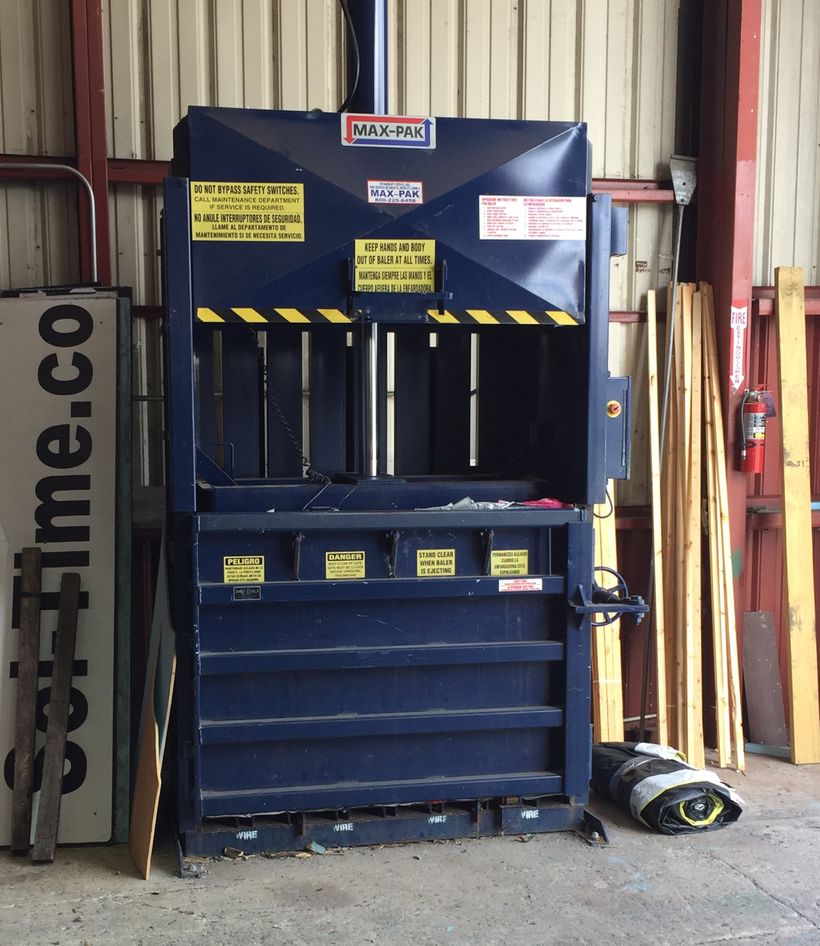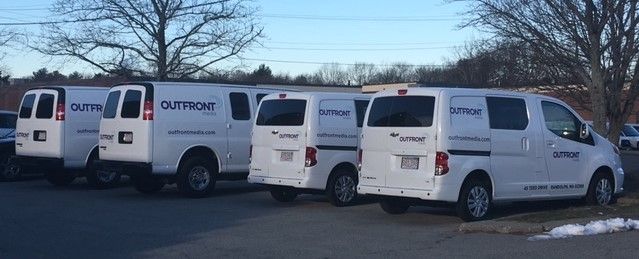
SPRINGFIELD, OR — When driving the cross-town freeway (Interstate 105), second-generation billboard owner Chris Zukin spots environmental progress, in lights. Zukin, general manager of Meadow Outdoor Advertising sees new more efficient, longer-lasting LED lights his company is installing on all its lighted billboards in Oregon and six other Western states.
“Paying it forward” to control future costs and reduce energy footprint, Zukin is making the investment to convert his billboard lights from high-wattage metal halide fixtures to dramatically more efficient LED lights. The upgrade, to be completed this summer, reduces energy consumption 65 percent. Zukin estimates an annual savings of more than 1.2 million kilowatt hours and $116,030 in utility expense.
Besides lower power bills, Zukin sees something else he likes, in his markets and nationwide: a better product. “The billboards look much crisper,” he says.
Zukin’s focus on environmental progress is part of a broader trend. The billboard industry is investing millions to make its ubiquitous product more sustainable and less impactful on the environment, by:
- Upgrading to LED lighting
- Converting to recyclable printed materials
- Experimenting with solar energy and electric vehicles
- Utilizing more sustainable office space and cleaner equipment
Enlightened self-interest combines to control costs, meet customers’ expectations, and improve worker health and safety. And, more progress is on the way.
Lamar Advertising Company (LAMR) has researched and tested electronic vehicles. The company, based in Baton Rouge, LA, is poised to convert half its light-truck fleet to electric vehicles when this emerging technology arrives in the US market. Lamar Operations Vice President Bobby Switzer knows that small electric small vans are being sold in Europe. As soon as this technology is available in America, he’s ready to buy.
Also on the horizon are better batteries to store power generated by renewable sources. OUTFRONT Media is testing solar lighting; Clear Channel Outdoor Americas (CCO) operates solar billboards in Las Vegas. Lamar has some 3,000 solar billboards in Florida, Louisiana, and Nevada. The company is prepared to increase that solar footprint to power off-grid billboard lighting, when “the right battery comes along,” says Switzer.
Conservation is a core business practice for billboards.
Lighting
“We have seen significant savings in energy costs from more efficient lighting,” says Mike Norton, executive vice president of Norton Outdoor Advertising in Cincinnati. “Additionally, we were able to apply credits to many of our lighting purchases.”
Buying from Ohio-based Holophane, OUTFRONT Media (OUT) is investing $35 million over five years to upgrade billboard lighting. The old fixtures are recycled, says Steve Hillwig, executive vice president for operations.
Besides burning less energy, new LED lights last four to five times longer, says Dan Rossi, corporate director of operations/safety at Clear Channel Outdoor Americas.
The metrics are impressive. In 2014, Lamar began a seven-year program to convert to more efficient billboard lights. When completed, its nationwide upgrade will save more than 70 million kilowatt hours a year compared to the old lighting method, according to the company’s conservative estimate. These annual savings could power more than 4,000 homes for a year, says Greg Gauthier, Lamar’s Director of Sustainability and Product Research.
Recycling
Mainly, roadside billboards are two sizes. Bulletins, typically located along highways, are 14-by-48 feet. Billboard posters, found near non-Interstate roads, are 12-by-24 feet.
Ads displayed on virtually all U.S. posters now are printed on recyclable single-sheet poly-ethylene (PE), instead of using paper and glue.
“Our poster plant has been paper-free for several years,” says Norton.
Used posters are bundled – sometimes by back-shop baling machines – and shipped to industrial recyclers such as Avangard Innovative in Texas or broker Waste Management. Billboard posters have been recycled into tarps, netting, and railroad ties.
A growing portion of ads displayed on larger billboard bulletins also are printed on recyclable material. Otherwise, billboard bulletin ads are printed on a heavier material that is not non-recyclable but often re-purposed into purses, handbags, backpacks, and other “upcycled” items.
Brand expectations now favor these attributes: kind, high quality, friendly, socially responsible, and leader, says Bryan Rose of the Cooley Group based in Rhode Island, which produces lighter, eco-friendly billboard material. Some advertisers seek receipts as evidence of responsible end use of their printed ads, says Hillwig at OUTFRONT Media, which recycles and repurposes some 2 million pounds a year.
Digital Hardware
When digital billboards were deployed more than decade ago, critics complained about energy consumption. Since then, technical advances and competition among manufacturers delivered dramatic gains in efficiency.
“We’ve seen significant reduction in power consumption. When we buy digital billboards, we look at total costs including the long-range cost of operation and maintenance.” – Dan Rossi, Clear Channel “New digital displays rarely require beefing up the energy needed for an existing location, whereas those from a decade ago almost always required us to up the amperage.” – Mike Norton at Norton Outdoor
Companies that buy and produce digital billboards predict continued gains in energy-efficiency.
Overall Operation
Billboard offices are called “plants,” which also trend eco-friendly. Clear Channel is parting ways with Ford’s F-250 truck model in favor of the F-150, which gets better mileage.
OUTFRONT Media is switching to energy-saving LED lighting inside its plants and leased space and also buying cleaner cranes and diesel vehicles. “Sustainability,” says OUTFRONT’s Hillwig, “is a top priority.”
In Pittsburgh, Lamar recently built a new office, choosing an environmental state-of-the-art design and sustainable materials.
Environmental Messaging
As business practices embrace eco trends, billboards have attracted environmental messaging.
When conservationists launched the centennial celebration for national parks, the U.S. Secretary of the Interior was in New York City with “Find Your Park” messages on billboards, including Times Square.
What’s next? Later this year, look for a billboard partnership with National Geographic photographer Joel Sartore to protect endangered animal species (“Photo Ark”).
Photos provided by Clear Channel Outdoor Americas, Holophane, Lamar Advertising Company, Meadow Outdoor Advertising, Outdoor Advertising Association of America, OUTFRONT Media, and Reliable Electric Products.
Originally published in the Huffington Post.
Download the PDF
Published: March 20, 2017








